How technology has changed… In the early 1960’s, videotape cut editing was common for major program productions, such as Homicide. Often the master tapes were distributed, and one could hear and see the splices pass through the video headwheel assembly of the quadraplex machines during broadcast. The technique was used by TVW too, though there was a great reluctance to cut the expensive 2 inch wide tapes. The best of the reject tapes were then used instead. Tapes that were exhibiting a high number of picture dropout, resulting from microscopic damage to the tape surface. The development of dropout compensators fixed that problem. They would insert the previous line, when a flawed line of vision was detected. The result was dramatic, and could be demonstrated by scratching the tape lengthways, to then find it restored to near perfect by the clever device. The photos displayed here show the Smith Editor that was used to edit highlights for World of Football, which was broadcast each Sunday from midday during the football season.
Another early TVW innovation was the use of two videotape machines to create a program delay for the weekly live telephone talkback program. The concept was devised over a casual meeting at morning tea in the canteen, between Max Bostock, Richard Ashton and Ken McKay. The two valve driven RCA TRT-IB videotape machine were used for this purpose for many years, with the configuration being slightly modified by the introduction of the newer transistorized RCA TR-3 playback only unit, as shown in the photo below. One machine would record, with the tape laced across to the other machine for replay.
Videotape cut editing was superseded by electronic editing, which then underwent various stages of sophistication.
Nowdays, both film and videotape are being replaced by new recording medium. Computer hard drive technology provides a cost effective means of storing vast quantities of program data in a high definition digital form, where computer software, such as Final Cut Pro, can manipulate content with a bewildering array of effects and ease of operation. One trained person can juggle a myriad of different items with relative ease, whilst also manipulating video and audio levels, and able to add titles, chroma key, fades, and all manner of sound and vision transitions without any deterioration in quality.
TVW’S first videotape machine the RCA TRT-1B
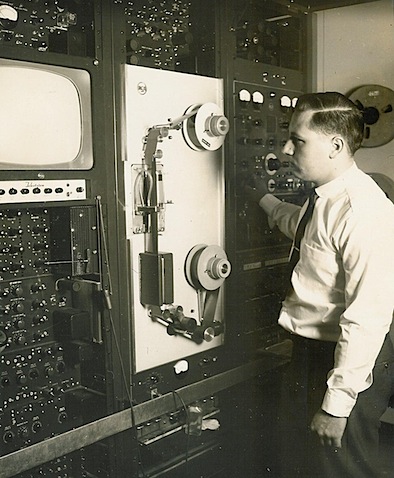
TRT-1B Operator: Ken McKay
Smith VTR Editor – Operator: Ken McKay
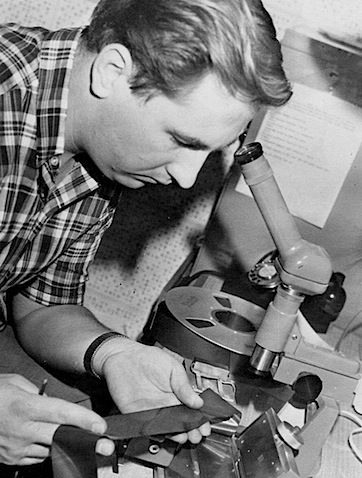
Smith two inch videotape cut editor in the early 1960’s. Cut editing was the only technique before the introduction of electronic editing.
Smith Editor – 2008
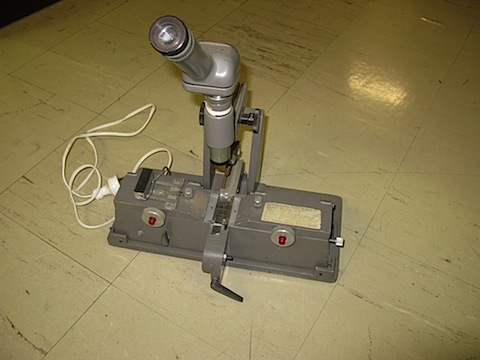
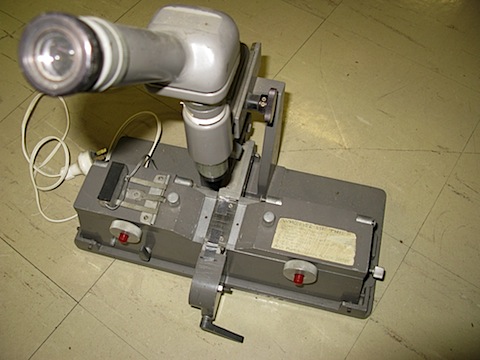
The same editing device that TVW first used to edit the 1962 Commonweath and Empire Games when Tim Ball, Ernie Taylor and Colin Gorey were the operators. Engineer Geoff Mortlock also worked with videotape at that time.
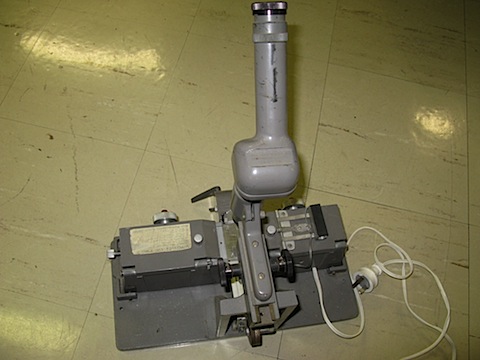
The power cord supplied electricity to a small lamp used to illuminate the cutting area, to insure that the edit pulses could be seen and aligned accurately before the cut.
Smith Editor – 2008
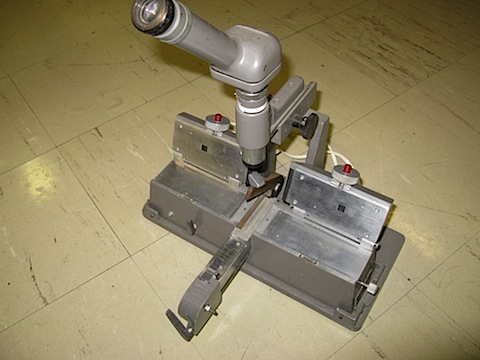
Sad to find it rusting.
1960’s Videotape Department at TVW
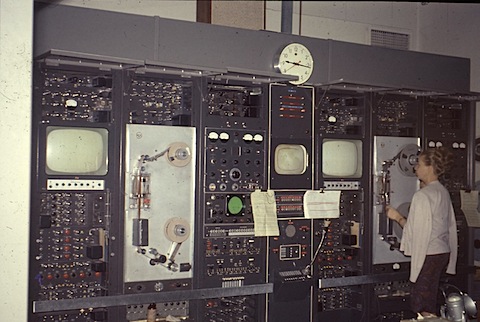
Two RCA TRT-IB’s side by side in the 1960’s.
The mainly value driven, low-band quadraplex machines consisted of five racks of equipment each. Three racks mounted together with operational controls, plus two extra racks of servers and power amplifiers for capstan and headwheel, located to the side… for each machine.
Videotape delay
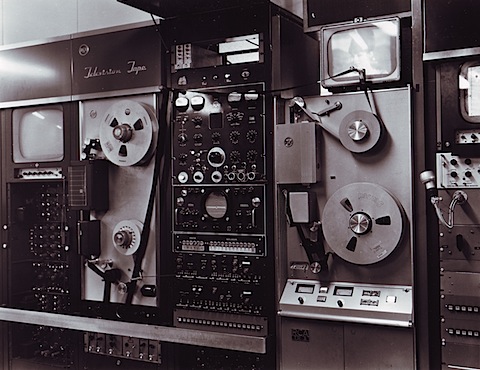
Two machine configuration for telephone talkback program delay to facilitate censoring in the event of inappropriate phone calls.















